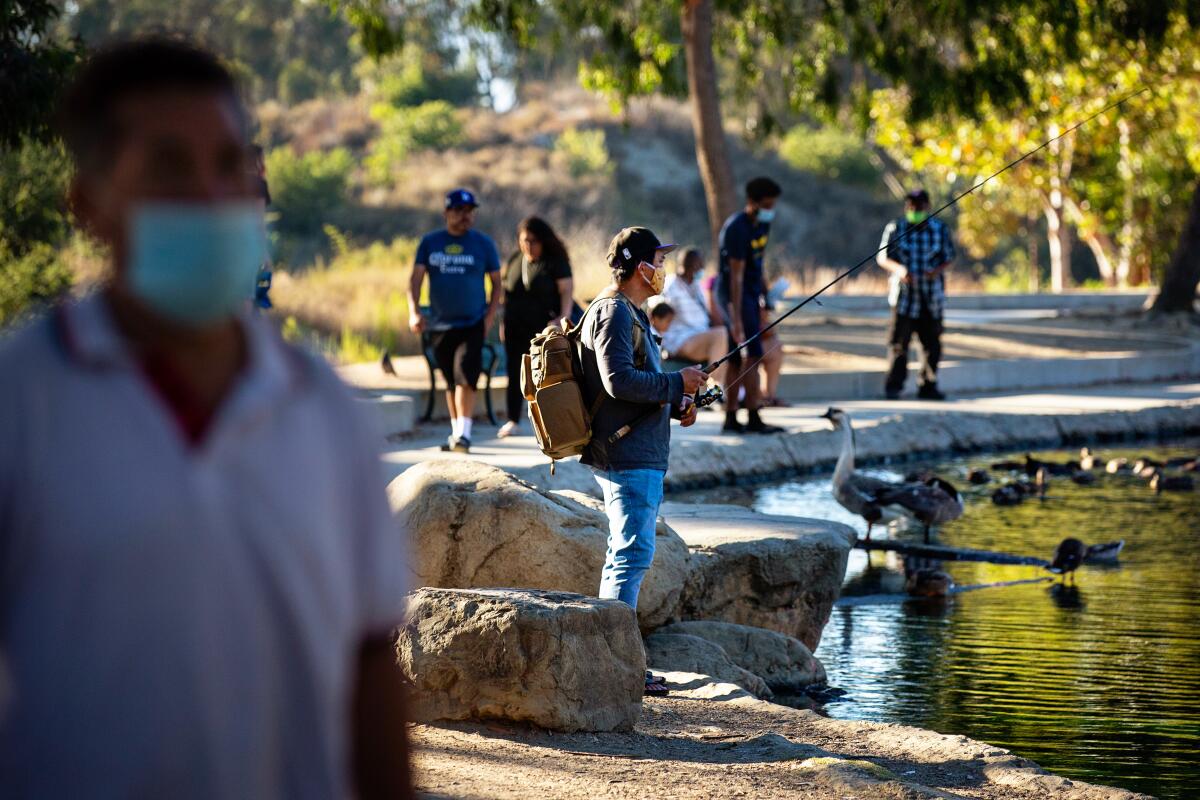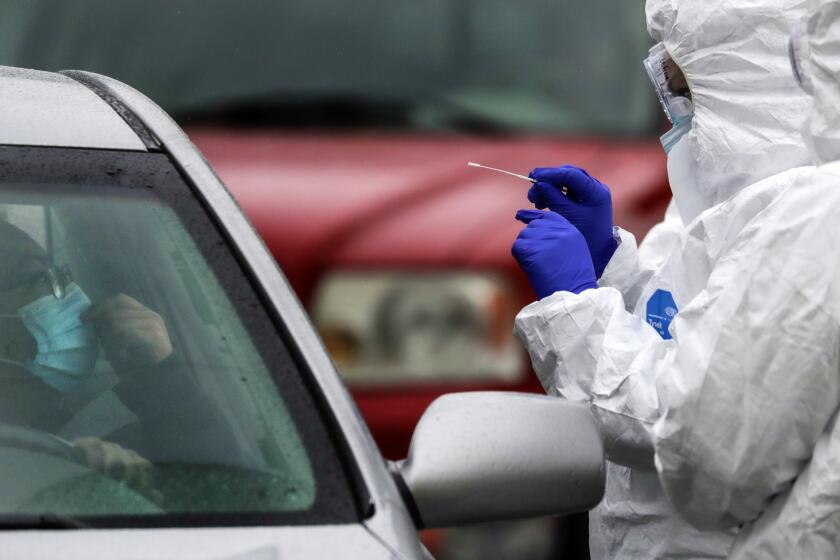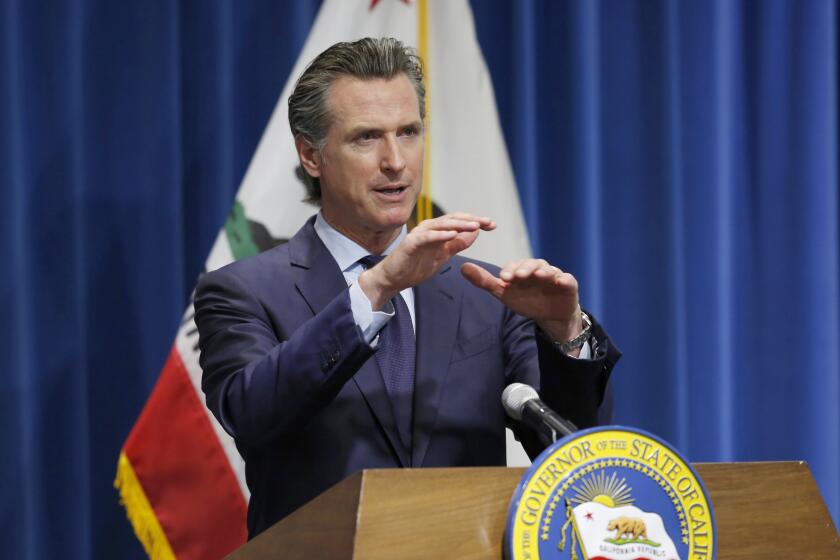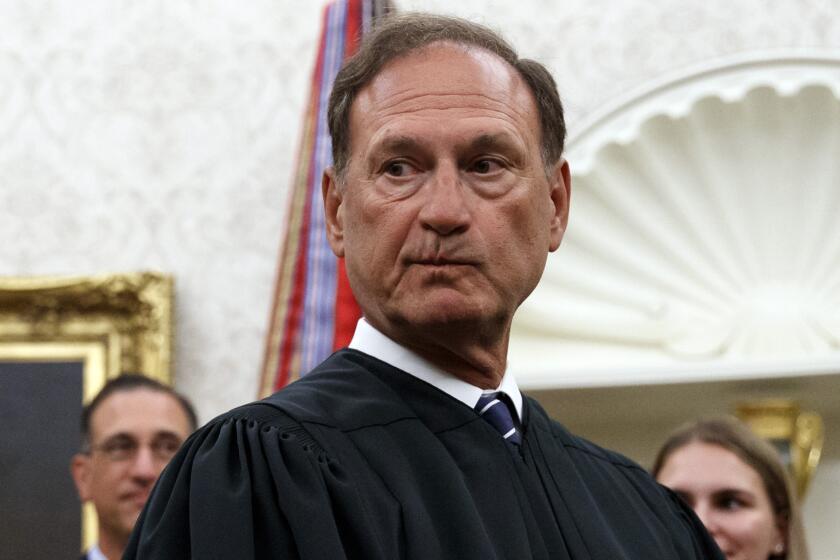California sees decrease in coronavirus hospitalizations as test backlog boosts number of confirmed cases

- Share via
With hospitalizations of coronavirus patients dropping in California, officials expressed some cautious optimism Wednesday that the state is making progress in its fight against the pandemic, even as a significant backlog in test results continues to distort the actual number of infections confirmed throughout the state.
Among the promising trends is the number of COVID-19 patients hospitalized statewide. That figure has fallen roughly 19% in the past two weeks, from 6,753 on July 29 to 5,442 as of Tuesday, according to Gov. Gavin Newsom.
Over that same time period, the state has seen a slide of about 16% in the number of patients in intensive care, from 2,029 to 1,699.
Newsom cautioned that the coronavirus crisis is far from being in the rearview mirror, and that residents still should follow the “fundamental rules of the road” to stem the spread of the disease — such as physical distancing, regular hand washing and wearing a face mask in public.
“The worst mistake we can make ... is run the 90-yard dash where we think we’ve got this and we walk away and we revert back to the way things used to be,” he said. “And that’s why we have to be very cautious and very deliberative.”
The county’s infection rate is substantially lower than Central Valley counties where case rates are surging
While hospitalizations have fallen in recent weeks, another key indicator — deaths — has risen.
California has seen a near doubling of weekly coronavirus deaths since the spring — with almost 1,000 fatalities in the last week alone, a recent Times data analysis found.
The Central Valley, in particular, has been ravaged of late and is now one of the worst coronavirus hot spots in the country.
In eight of the region’s southern counties, weekly COVID-19 deaths have surged from about 20 a week in April to nearly 200 a week in the last two weeks, the Times analysis found. San Joaquin Valley residents make up 20% of recent deaths statewide, even though they account for about 10% of California’s population.
Statewide, roughly 10,700 Californians have died from COVID-19 since the pandemic began. Almost half of those have been in L.A. County, where
L.A. County Public Health Director Barbara Ferrer announced 58 new fatalities Wednesday, pushing the region’s total death toll above 5,100.
Experts have said deaths are a lagging indicator of coronavirus spread and likely reflect exposures to the virus that occurred weeks earlier.
Therein lies one of the fundamental challenges when it comes to contending with COVID-19: It takes time to see the benefits, or repercussions, of any new policy decisions or health orders.
Recent history also provides rationale for caution. Officials cleared the way for a wide array of business sectors to reopen in May after it appeared California had successfully flattened its coronavirus curve, but reimposed many restrictions in July following a spike in infections and hospitalizations.
The decrease in hospitalizations comes as the results of a backlog of 250,000 to 300,000 test results dating from July 25 has pushed California to record-high numbers of newly announced cases this week.
The state announced its two highest single-day totals in terms of new cases on Monday and Tuesday: 13,140 and 12,190, respectively, according to The Times’ tracker.
However, officials have said those numbers are impacted by data failures with the CalREDIE electronic system, which collects information from laboratories and feeds it to state and local health departments.
Of the 11,645 new cases Newsom said had been confirmed statewide over the 24-hour period ending Wednesday afternoon, more than half — 6,212 — were the result of that logjam.
The delayed data dump has affected Los Angeles County, too, where “close to 700” of the 2,428 additional cases Ferrer announced Wednesday were the result of the state bottleneck.
Gov. Gavin Newsom faced reporters for the first time since he touted the inaccurate coronavirus data as a positive sign of fewer COVID-19 infections a day before the glitches became public. The governor said he was kept in the dark about the problem, even as state health officials were warning counties about data issues days earlier.
Newsom said the choice isn’t between reopening the economy or staying the course with coronavirus-related health measures. The two, he said, are linked.
“The most urgent economic recovery tool for the business community, the one that we need the most, is to stabilize this virus, to bend the curve of this pandemic, to do everything in our power to mitigate the spread of COVID-19,” he said. “That’s foundational.”
Times staff writers Rong-Gong Lin II and Iris Lee contributed to this report.
Sign up for Essential California
The most important California stories and recommendations in your inbox every morning.
You may occasionally receive promotional content from the Los Angeles Times.










